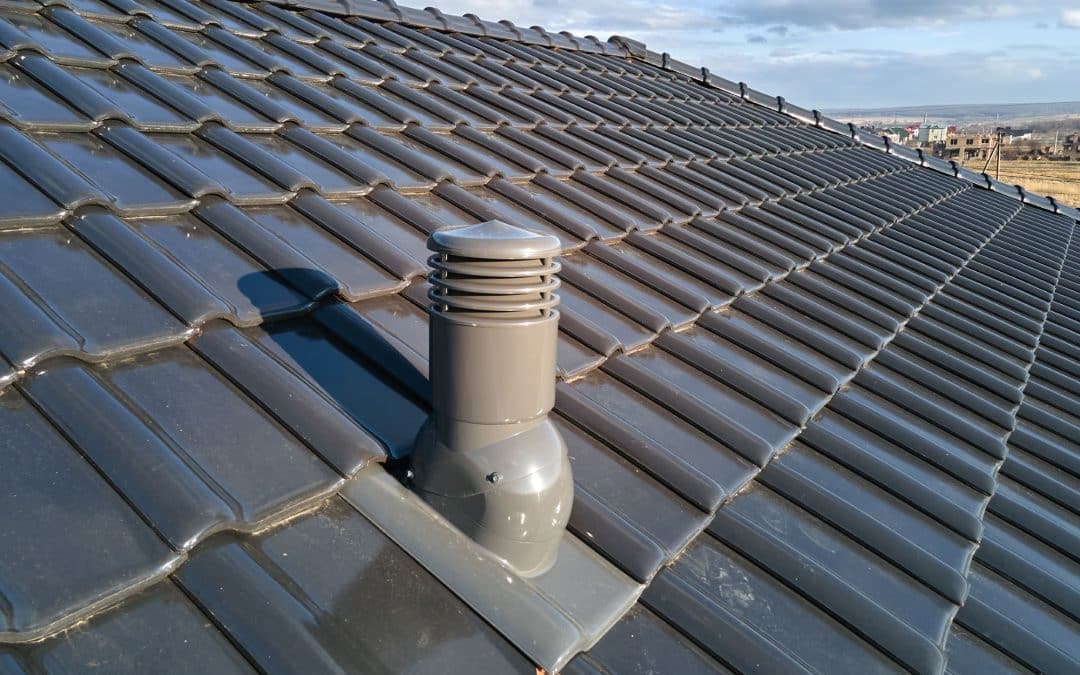Have you ever wondered what keeps your attic cool during the hot summer months or prevents ice dams in the winter? The answer lies in effective roof ventilation, a critical but often overlooked aspect of home maintenance. Proper ventilation ensures that your roof lasts longer and your home stays comfortable in various weather conditions.
At Mike Huddleston Roofing Systems, we understand that a well-ventilated roof is key to protecting the structural integrity of your home. It’s not just about letting air in and out; it’s about creating a balance that helps control temperatures and moisture levels in your attic. Neglecting this crucial aspect can lead to numerous problems, which can be costly to fix and may cause discomfort in your own home.
Let’s dive into why roof ventilation is so important and what you can do to ensure your roofing system has the right components and strategies in place for optimal airflow. Knowing these details can save you money on energy bills and future roof repairs, making your home more energy-efficient and comfortable year-round.
Why Roof Ventilation Is Essential
Roof ventilation plays a pivotal role in the lifespan and efficiency of your roof. It’s not simply about keeping the house cool in summer or warm in the winter; it’s about preventing damage that can happen when attics aren’t properly aired out. Moisture accumulation is a major threat to roof health — without correct ventilation, warm, moist air becomes trapped in the attic, which can lead to mold growth and rot in the roof’s wooden structures. This can weaken the entire roof, potentially leading to costly repairs or replacement.
Furthermore, during colder months, proper air circulation is key to avoiding ice dams. These occur when heat from the attic causes snow on the roof to melt and refreeze at the eaves, potentially causing significant damage. Effective ventilation helps maintain a cooler attic by minimizing the temperature differences between the attic and the outside air, thus preventing the thaw-freeze cycle. Proper ventilation not only extends the life of your roof but also enhances the overall energy efficiency of your home.
Key Components of a Well-Ventilated Roof
A well-ventilated roof includes several key components that work together to keep air flowing properly through the attic. First, there are intake vents, which are usually placed along the soffit areas of the roof. These allow fresh, cool air to enter the attic. The placement and sizing of these vents are crucial because they directly influence how effectively new air can circulate throughout the attic.
Exhaust vents are the second major component. Located at or near the roof’s peak, these allow the hot, moist air that rises naturally to escape. Among the popular types of exhaust vents are ridge vents, which run along the roof’s ridge and offer an even airflow along the top of the house. Ensuring that there is a balance between the intake and exhaust ventilation is crucial; this balance is what facilitates the ideal airflow needed to protect your roof from overheating and moisture-laden air in the attic.
By maintaining the proper functioning of these components, we ensure that your roof has the best possible defense against weather extremes, temperature fluctuations, and internal humidity concerns, all of which contribute to a solid, durable roofing system.
Common Signs of Poor Roof Ventilation
Identifying poor roof ventilation early can save you from experiencing severe roof damage and costly repairs. One clear sign is an unusually hot and stuffy attic. If, during the warmer months, your attic feels significantly hotter than the outside temperature, it’s likely that your ventilation is inadequate. Similarly, during winter, a poorly ventilated attic can feel unusually warm compared to the outside air, an indication that the heat from your home is getting trapped inside the attic.
Another prominent sign is the presence of moisture or mold in the attic. Moisture can accumulate when the warm, moist air from inside your home meets the colder surfaces of your attic, leading to condensation. This condensation provides a breeding ground for mold and can eventually rot the wood in your roof’s structure. Additionally, if you notice that your ice dams are particularly large or forming frequently, this can be another indicator of poor ventilation as it points to excess heat accumulating in the attic.
How to Improve Your Roof’s Ventilation
Improving your roof’s ventilation can be straightforward if you understand the necessary steps. First, assess your current ventilation system to ensure it’s not blocked by insulation, dirt, or other debris. Clear any blockages in existing vents and consider adding more vents if the current ones are insufficient.
Another effective method is to install ridge and soffit vents. Ridge vents, when paired with soffit vents, allow cool air to enter the attic at the eaves and exit through the peak, creating a continuous airflow that helps keep the attic temperature steady. If your home doesn’t have these, we can help install them correctly to optimize your roof’s ventilation.
Additionally, a powered ventilator should be considered for more regulated air movement. These ventilators use a small motor to pull hot air out of the attic actively and can be particularly useful in very hot climates or in homes with naturally poor air circulation.
Conclusion
A well-ventilated roof is crucial for maintaining the health of your building’s structure and for ensuring efficient energy use in your home. Recognizing the signs of inadequate ventilation and taking steps to improve airflow can protect against damage and reduce the lifespan of your roof. At Mike Huddleston Roofing Systems, we specialize in enhancing and repairing roof ventilation to help homeowners avoid the pitfalls of moisture damage and inefficient energy use.
If you’re concerned about your roof’s ventilation or recognize any of the issues mentioned, don’t hesitate to contact us. Let’s ensure your roofing system is working at its best to protect your home from both the scorching heat and the bitter cold. Secure your roof’s health with expert care from Mike Huddleston Roofing Systems.

